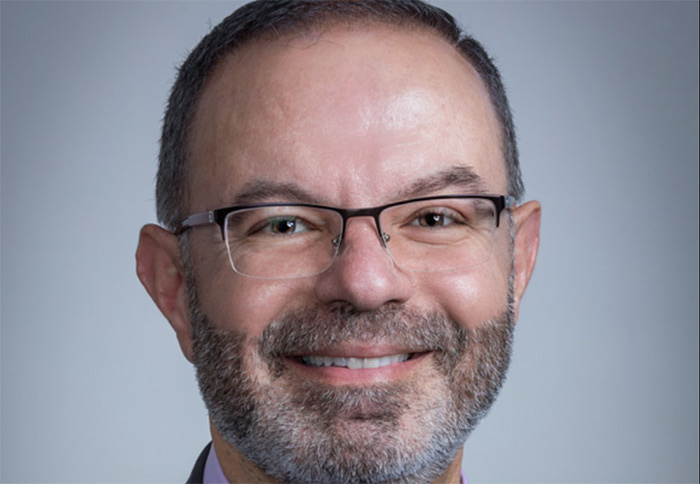Vista teacher leaves classroom, shares decades of personal experience
After 40 years as a classroom teacher, Teri Tondee is kicking off her retirement by going on a safari, heading to Africa this October with friends. The Claremont educator’s professional life has been a safari of sorts, too, with Ms. Tondee serving 
On June 13, Ms. Tondee spoke to the COURIER about her experiences and felt some pangs as she said goodbye to her class of enthusiastic kindergartners and to Vista del Valle, a school she has come to love.
Ms. Tondee is not just a staple of Claremont schools; she is a product of them. She moved to the City of Trees in the second grade, attending Condit Elementary, El Roble Intermediate and Claremont High School. She developed an early penchant for teaching, walking from CHS to Condit when her schedule would permit to volunteer with the kids.
After graduating from CHS, Ms. Tondee headed for San Diego State University, where she earned her teaching credential. She graduated early and immediately began teaching 6th grade at Chaparral Elementary School. That summer, she had a chance to teach at Vista del Valle with then-principal Duane K. Jackman, revered today as founder of the Vista Track Meet. Her introduction to Vista proved to be love at first sight.
Ms. Tondee transferred to Vista that fall, undertaking a tricky assignment. At the time, the school had a program called Early Childhood Education (ECE), where students in grades 1-3 were grouped together in classes overseen by 2 teachers, one specializing in math and another in language arts. Ms. Tondee was assigned a group of 4th graders deemed in need of extra time in the primary grades because of lower academics or behavior problems.
“Eighteen was a miracle number at that time in the ‘70s, when the classes all had 30 kids,” Ms. Tondee noted.
Still, her charges were challenging, as was the setting. There was no classroom available, so her class was put in the lunchroom, which they had to vacate during lunch.
“I look back and go, ‘What a crazy year,’” Ms. Tondee said.
She was buoyed by youth, however, and took it in stride. The following year, Ms. Tondee was transferred to the “Centers” program, planning and overseeing enrichment and reinforcement activities.
At that time, schools across the United States didn’t have their current emphasis on standardized testing, and California schools were flush with funding that flowed before the 1978 passage of Proposition 13 curtailed the collection of property taxes. In this atmosphere, the Centers program flourished for many years at Vista del Valle.
Groups of 10 students would be released from their classroom for a designated period, where they would meet with an adult who would work with them to plan their Centers learning choices. The students were then free to head to one of several learning headquarters, such as a science center, a computer center or the “TV studio.” While a supervisor might coax a child stuck in a rut to try out a new activity, the choice was largely up to the students.
“We felt that kids should be responsible for their own learning,” she said.
The Centers program was originally aimed at children in the primary grades, but it soon expanded to include the entire student body. Upper graders would take mini-courses, which Ms. Tondee remembers as “such great classes.” There was a 3-week course on space; a photography course in which the students made their own pinhole cameras; and a mosaic course in which the students were taken around Claremont to see some of the city’s noted mosaics.
Ms. Tondee taught fourth grade for a year. She then returned to the Centers program for a couple years, during which time she worked on a research program called Voices from the Inside, a collaboration between Claremont Graduate School and Vista as well as schools in the neighboring Montclair and Pomona districts. One of the main conclusions was that educational programming should come from teachers, administrators and staffers, as well as from students and parents, as opposed to those outside the classroom such as academicians and policy makers.
Ms. Tondee, who served as the liaison between Vista and the Claremont Graduate School, said she enjoyed the collaboration between the staffs of the participating schools, with each sharing their best practices and their challenges and generally creating educational synergy. The process predated the cross-classroom and intra-district Professional Learning Communities (PLCs) that have become such an integral part of education today.
Over the years, funding for schools in Claremont and across the state began to dwindle. With no money for the necessary aides, the Centers program fizzled. Based on the Voices project, Vista had opted to break its students into multi-age teams. Ms. Tondee moved on to teach a fifth/sixth grade combination class for a number of years.
Maintaining perspective
A dozen years ago, Ms. Tondee was assigned a first grade class. And several years ago, she moved to her final niche as kindergarten teacher. Her time in Vista’s lower grades convinced her that “Younger students need an advocate out there.”
While standardized testing doesn’t begin until the second grade, its expectations have trickled down. Kindergarten teachers must administer benchmark assessments 3 times a year, a time-consuming proposal considering that many assessments must be done on a one-on-one basis. Inevitably, such assessment “helps guide instruction,” Ms. Tondee said.
There’s no 2 ways about it: More is expected of today’s kindergartners.
When Ms. Tondee began teaching kindergarten, she had to impart about 5 sight words to her students, many of who were still mastering their letters. Now, kindergartners are expected to learn 48 sight words. It is an academic leap with which many students struggle.
“Some standards don’t fit the developmental level of the students,” Ms. Tondee said. “We’re asking kindergarteners to be writing whole sentences, and sometimes the fine motor skills are just not there. They need to be doing play-dough and mushing stuff and doing puzzles.”
Ms. Tondee worked hard to retain the building blocks that once reigned as the primary curriculum of early schooling.
“Any teacher of young children needs to make sure they’re providing all the developmental skills—teaching each child social skills, teaching them how to be a student, developing their motor skills—plus the academic skills,” she said. “There are so many things you have to blend together.”
Last year, transitional kindergarten was implemented throughout California, modeled as a combination of preschool and kindergarten and aimed at “the young fives” who once had to wait a year to start kindergarten. Ms. Tondee sees T-K as a boon, because it allows a whole group of kids to be prepared for the demands of today’s kindergarten.
“Nowadays, preschool is more like kindergarten,” she pointed out.
It’s not just little ones who have developmental needs, whose cultivation may not lead directly to a higher test score, Ms. Tondee said.
“Fifth and sixth graders need a lot of hands-on learning and more in the sciences,” she said.
It’s not that Ms. Tondee is against testing. She agrees assessments are important throughout and should help guide instruction, because they show teachers what students need and don’t need. She simply feels it is important to retain perspective.
“It’s a few days out of a kid’s life—it’s not the whole child,” Ms. Tondee said. “Let’s look at all kinds of good things about that child and at other ways to show success.”
The Claremont Unified School District is currently working to put in place the Common Core State Standards, which will replace the current STAR testing in the next few years.
“We’ll have tests where you have to express more than a multiple-choice answer. I think more critical thinking is coming into play,” she said. “We’ll have to go back to doing problem-solving and the younger students will have to work with puzzles.”
Like most educators, she wonders where the schools will get money for the computers on which students will need to type for the increased number of written assessments. Still, Ms. Tondee sees the Common Core, with its emphasis on higher-level reasoning, as promising.
Ms. Tondee has seen myriad education trends come and go over the years. At one point, students were taught to read with a painstaking emphasis on every phonetic sound. Then, educational experts began promoting a whole language approach, in which students learn to recognize words or groups of characters by sight. In Ms. Tondee’s experience, it takes a combination of these methods to reach all students.
Once, there was a move to teach children through literature. The latest trend is to place a greater emphasis on nonfiction, so that students can absorb factual information on an array of subjects while improving their reading and comprehension.
“Over my 40 years, there’s a swinging of the pendulum,” Ms. Tondee said. “Usually, it needs to be right in the middle. You need a blend.”
Ms. Tondee has just begun decompressing from her long stretch as an educator, sorting through years of accumulated teaching material and memories. She is looking forward to spending time with her 3 grown sons and getting to her “bucket list,” which includes camping in the National Parks of the middle and eastern portion of the United States and traveling to Europe, particularly Italy.
After a lifetime as a teacher, however, she doesn’t mind sharing what she feels is the key to educational success.
“You need to build lifelong learners,” she said. “If I can have kids come out of my class loving to learn, they’ll be okay. They may not have met the exact standards, but what they don’t know, they will seek.”
—Sarah Torribio
storribio@claremont-courier.com








0 Comments